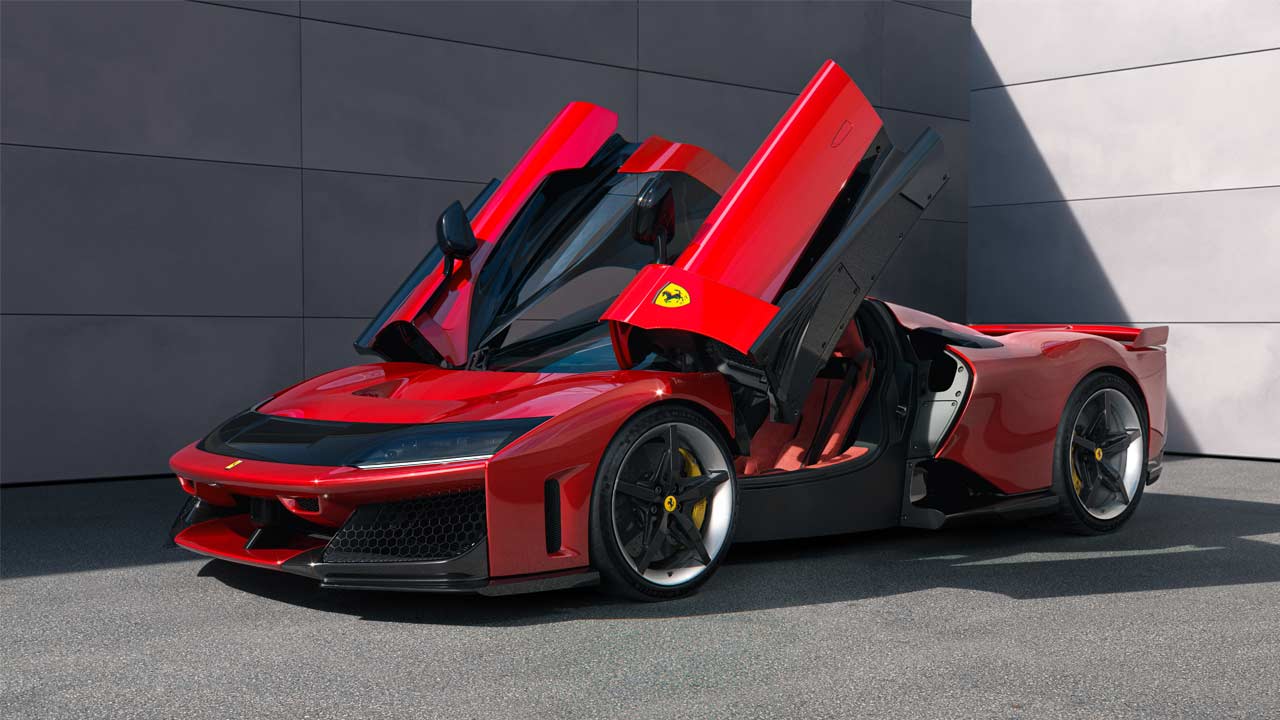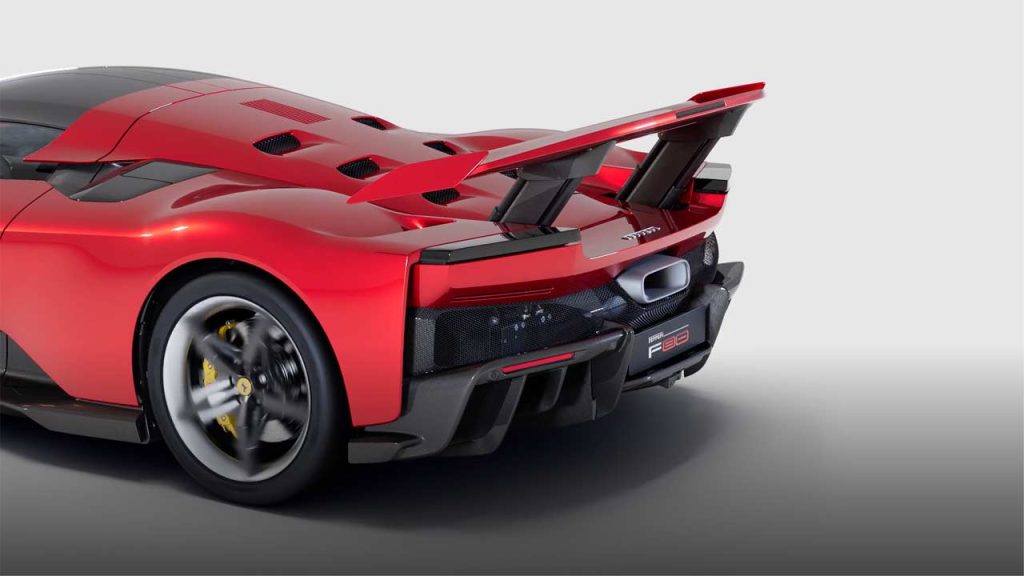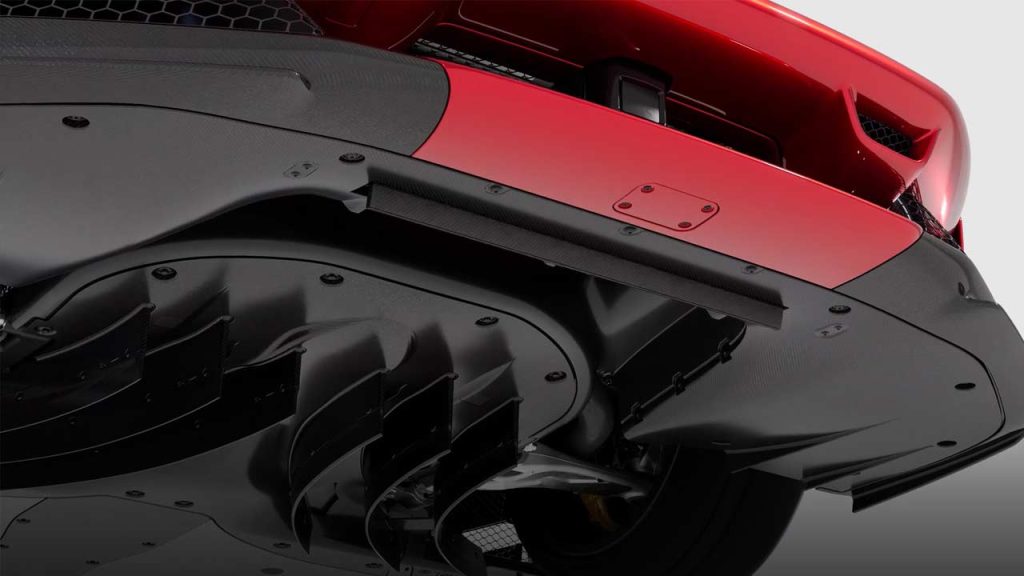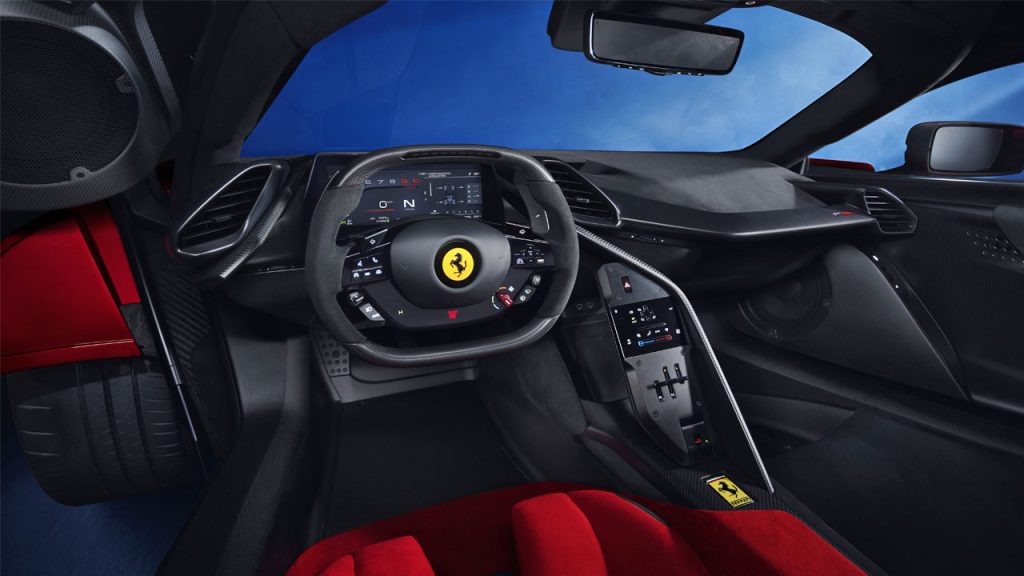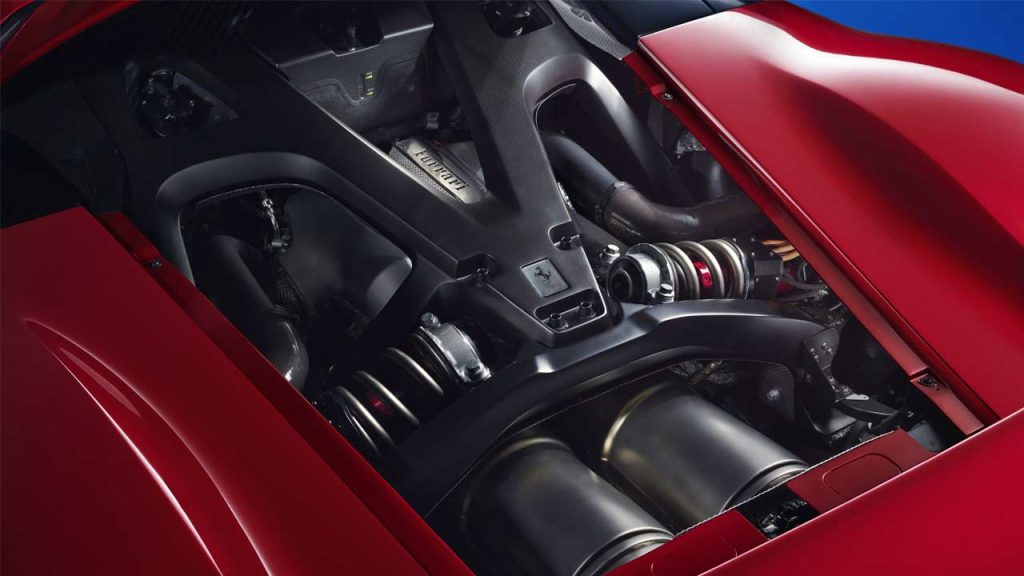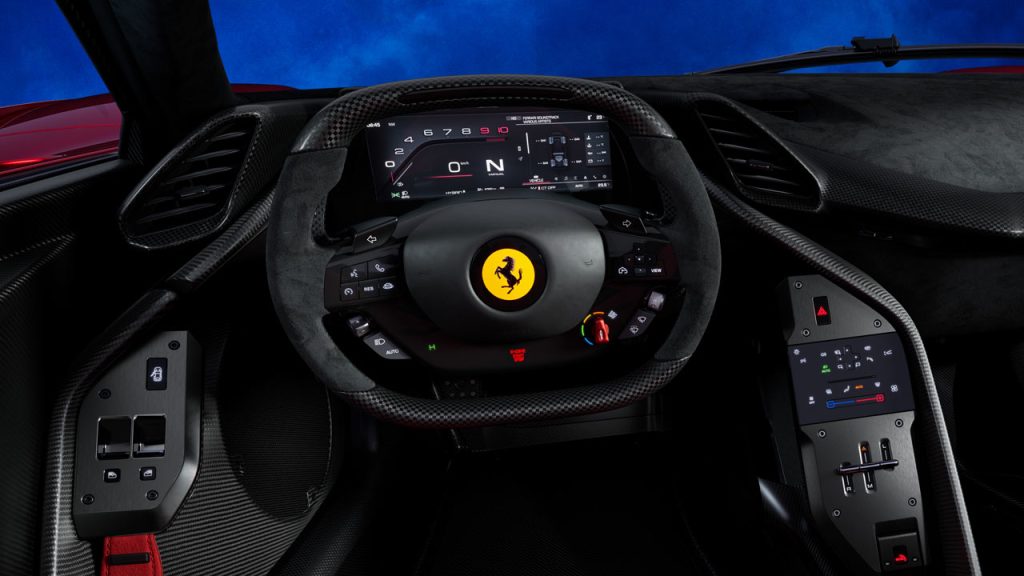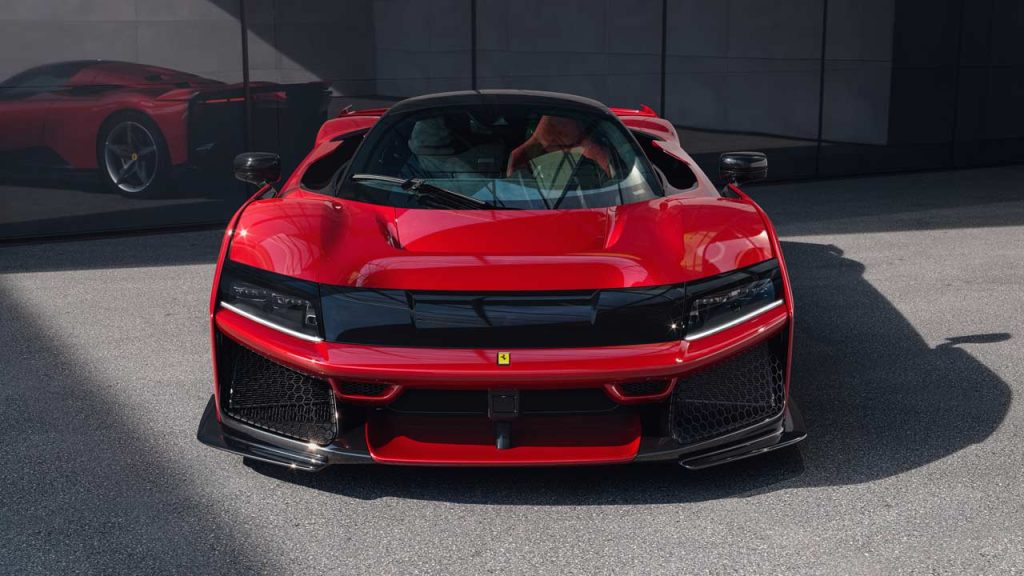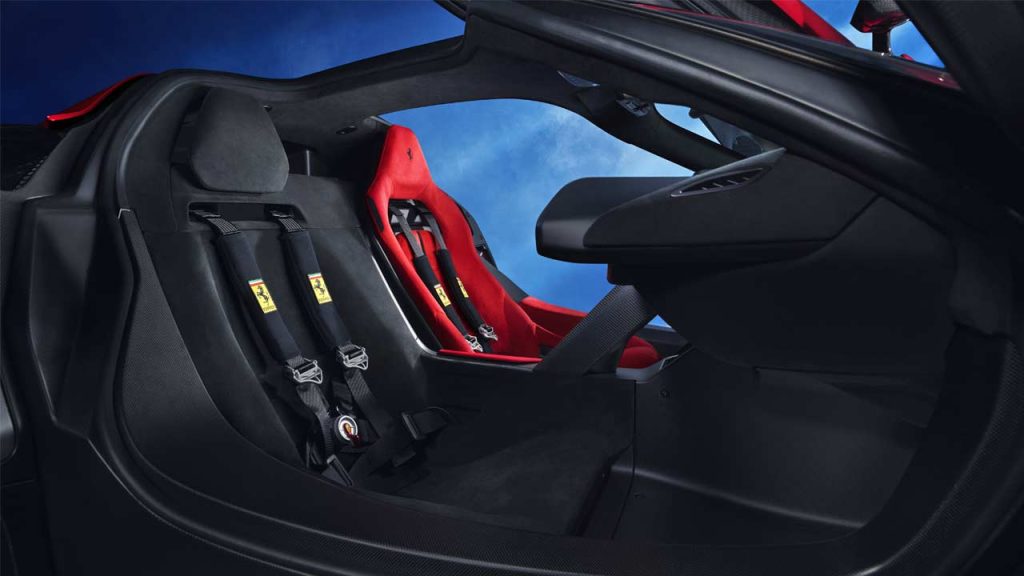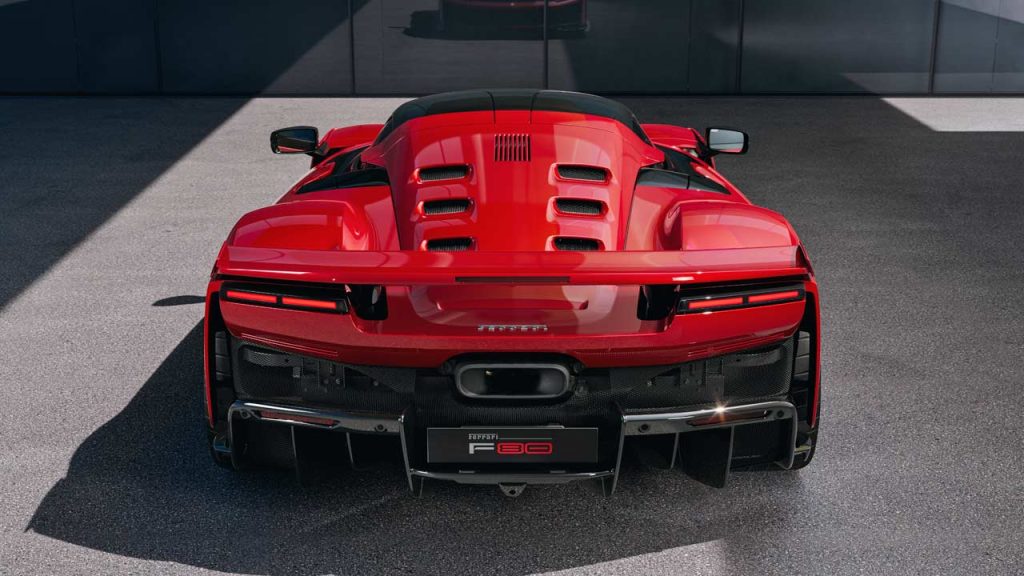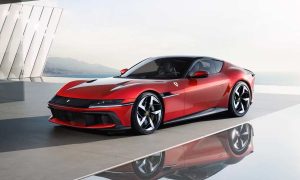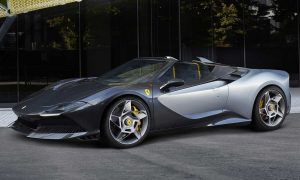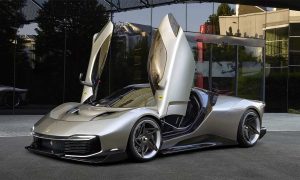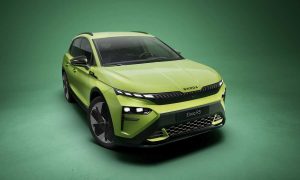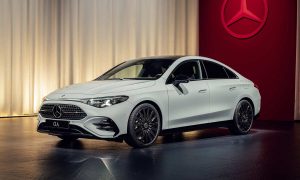Unlike the F8, the ‘8’ in the name doesn’t represent/suggest the number of cylinders here. The number 80 becomes relevant only in 2027, the year Ferrari celebrates its 80th anniversary by completing the production of 799 examples of the F80. Although the company was officially founded in 1939, it started producing Ferrari-branded cars in 1947. Its first car, the 125 S, was powered by a 1.5L V12 (yes, you read that right). But anyway, according to reports, the LaFerrari successor carries a base price of €3.6 million (including taxes) in Italy. And of course, all of ’em are already allocated to Ferrari VIPs.
The styling of the F80 is a mix of retro-modern touches; more specifically, the F40’s influence is quite significant in the way the F80 looks. The vertical panel (part of the door) behind the wheel arch, for example, is a homage to the F40. The same is true with the NACA ducts on the rear haunches and outlets at the back. There’s an incredibly large S-duct at the front, but overall, I guess you could say that the F80’s design is a modern iteration of the F40.
As for active aero bits, you got an active rear wing that extends outwards and tilts. There’s also a small element at the front that drops down when the system deems necessary. The overall aerodynamics of the F80 is claimed to generate 1,000 kg (2,205 lbs) of downforce at 250 km/h (155 mph). At high speeds, the active suspension (actuated by four 48-volt electric motors) drops the car by 20 mm at the rear and 25 mm at the front.
#FerrariF80 chassis pic.twitter.com/69FPth68qe
— Sagar (@autodevot) October 31, 2024
The car rides on a staggered wheel setup of 20-inch at the front and 21-inch at the rear. Behind the wheels, you’ll find the CCM-R Plus brake system with discs measuring 408 mm at the front and 390 mm at the rear. The CCM-R Plus uses longer carbon fibres to significantly improve mechanical strength (+100%) and thermal conductivity (+300%) over the previous-generation system, says Ferrari. As for the construction, the cell and roof are made of carbon fibre and other composites, while the front and rear subframes are made of aluminium and are fastened to the tub with titanium screws. At the rear, there is an additional aluminium subframe, fastened to the main rear subframe with screws, for carrying the battery.
Let’s get the numbers out of the way then, shall we? The F80 packs a hybrid powertrain. The ICE is a 3.0L twin-turbo V6 that revs up to 9,000 rpm. It offers 662 kW (900 metric hp) at 8,750 rpm and 850 Nm (627 lb-ft) of torque at 5,550 rpm. There are two electric motors at the front, each producing 105 kW (143 metric hp) and 121 Nm (89 lb-ft). There’s an MGU-K at the back with peak figures of 70 kW (95 metric hp) and 45 Nm (33 lb-ft). Transmission is an 8-speed DCT. The F80 boasts a system power output of 883 kW or 1,200 metric hp.
As for the official performance figures, the 0-100 km/h (62 mph) sprint time is 2.15 seconds, while the top speed is 350 km/h (217 mph). Dry weight is claimed to be 1,525 kg (3,362 lbs); the 2.28 kWh battery pack weighs 39.3 kg (87 lbs). But anyway, notice the color-theme difference between the seats. The difference is not just visual though; only the driver seat is adjustable while the passenger seat is fixed to save weight.

Leave a Reply
Note: Comments that are unrelated to the post above get automatically filtered into the trash bin.
